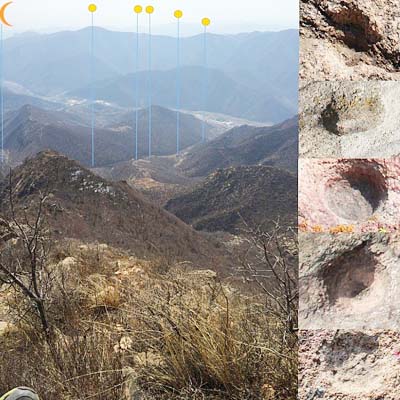Archaeologists have found astronomical engravings on a 2,000-year-old rock carving in north China’s Inner Mongolia Autonomous Region.
The five holes spanning a distance of 1,000 meters were found in moorstone rocks in Yinshan Mountains in the region’s capital Hohhot. Yinshan Mountains are famous for a large cluster of ancient rock paintings.
The holes form a string similar to a pearl necklace.
Dating analysis confirmed the holes were made during the late Warring States Period (475-221 BC) to represent Venus, Jupiter, Mercury, Mars and Saturn.
The carvings show positional information of the five planets and characteristics of each.
The formation of the five holes, for example, the curve formed and the distances between them, resembled the estimated position of the five planets in 204 BC, archaeologists deducted.
The rocks used were also different in color and texture. For example, the rock representing the planet Mars was carved on a red rock, while that for Mercury was located near a creek.
Historical information suggests Modu, leader of the Xiongnu tribe, defeated his enemies in 204 BC, and the planets were likely to have been carved that spring at the foot of the mountain where he prayed, archaeologists say.
The Xiongnu occupied a vast territory in and around today’s Mongolia and north China.
They founded their first empire in the third century BC. They were conquered during the Han Dynasty (206 BC-220 AD).
Categories
Ancient astronomy revealed in 2,000-year-old rock carving
